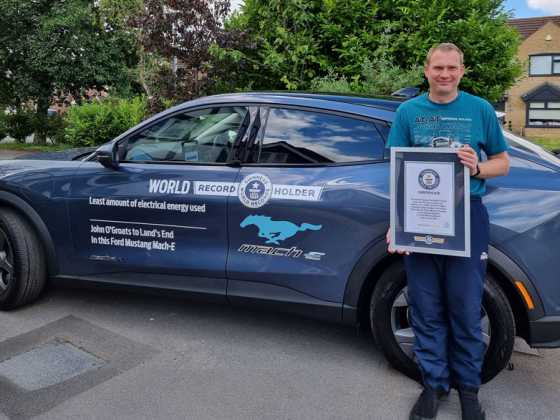The road ahead for in-car technology
Steve Reynolds, Chairman of the Mobile Data Association explores recent changes in the convergence of mobile transport technologies and makes projections for areas of future growth
 Up until now the most prevalent use of mobile technologies in transport has centred around its deployment in vehicle tracking. Tracking solutions assist businesses in making better use of their fleets and act as an effective security measure. These two benefits alone have commonly justified the cost of deployment.
Up until now the most prevalent use of mobile technologies in transport has centred around its deployment in vehicle tracking. Tracking solutions assist businesses in making better use of their fleets and act as an effective security measure. These two benefits alone have commonly justified the cost of deployment.
DRIVING CHANGE
But the last three years have witnessed significant changes in the application of mobile technology in the transport sector. New enterprise solutions and business-to-business developments, together with headline-grabbing initiatives from the largest car manufacturers in the consumer-space suggest we are on the cusp of a radical change.
There are six main reasons why the transport sector is demanding more from its mobile technology partners. These are:
• Road Transport working time directive
• Employers’ duty of care responsibilities
• Rising cost of fuel
• Increased road congestion
• Customers increased demands
• The Corporate Manslaughter bill
As a direct result, the transport sector is seeking creative deployments of innovative new mobile technologies to solve this raft of issues. The development, production and implementation of specialist mobile technologies resulted in a new global category know as Intelligent Transport Systems (or ITS).
In its policy framework document, The Department for Transport defines ITS as “combinations of information processing, maps, databases, communications and real-time data from a range of sensors, to produce solutions.”
These are said to enable:
• Infrastructure owners and operators to improve the quality, safety and management of transport networks – railways, motorways
• Individual travellers, drivers, operators and authorities to make better informed and more “intelligent” journey decisions
• Network operators and third party service providers to supply advanced information services, increasingly on a multi-modal basis, to all types of traveller
• Road users to drive safer, “smarter” vehicles.
Ubiquitous deployment of ITS on a global scale is many years away, but there are many short to medium term opportunities for using existing technologies in creative ways.
Intelligent tracking solutions monitor driver behaviour and result in remedial action. This improves all-round safety and fuel economy while helping usage reporting to assist the Road Transport working time directive. Further benefits include auditable process compliance. Risk assessments can be performed to meet Driving at Work responsibilities and mandatory use of route-optimisation features help to avoid congestion and reduce mileage. Meanwhile, electronic point-of-delivery solutions guarantee the provision of real time, accurate data into databases and back-end IT systems.
HEALTH AND SAFETY ISSUES
Enterprise mobility (EM) in transport and logistics can be used to undertake a ‘Start of Day’ HGV vehicle risk assessment. A driver can be forced to enter risk assessment data about the condition of a HGV vehicle and trailer unit before receiving his day’s work. This ensures that a vehicle risk assessment is completed and relevant data is captured and stored before work begins.
Alternative risk assessments can be integrated into the EM system, depending on weight or dimension restrictions, which demand that appropriate manual handling processes are followed.
This can all be achieved with mobile technology today. However, deploying a solution that handles the six imperatives of the Transport Sector requires several technology partners. Therefore Tracking, Navigation and Field Mobility vendors are partnering to leverage their offerings, with mobile networks involved in transmitting real-time information to and from vehicles and mobile devices.
We are starting to see the emergence of such partnerships, but as with all partnerships these will take a while to materialise through fully integrated rich transportation solutions. By 2011 we will start to see the fruits of these partnerships and the innovation in technology required to deliver complex solutions.
To ensure the success of these new transport solutions, vendors must move away from proprietary solutions and start working towards open standards which enable transport systems to share and integrate with back office systems. Since ITS systems are becoming more complex, testing and ultimately certification of ITS applications will need to be adopted.
TESTING OF NEW SOLUTIONS
Initiatives are continuing apace to address these industry needs. The innovITS ADVANCE ‘city scape’ test track has been built to address the testing and certification requirements of businesses operating in telematics and intelligent transport. The only site of its kind in Europe hosts private GSM and Wi-Fi networks, licensed by Ofcom, and directional antennae which enable user-defined control of performance and signal strength, amongst other parameters.
The ADVANCE site is being used as a test bed for creative new innovations from the telecommunications, automotive and electronics industries, as well as by highways authorities and operators.
“Improving the traffic flow of highways, easing urban congestion at high volume times and locations, and introducing effective new safety measures to reduce the chance of collision: all of these are specific points of ITS focus,” explains Roger Wilson from innovITS.
There are clear dangers in cutting corners on the road to market with ITS solutions. A lack of effective testing means insecure solutions and potential safety issues. Powerful approvals, certifications and hard evidence of robust testing substantially strengthen the credibility of any new Intelligent Transport solution.
During the early stages of product development the rate and severity of failure can be high. ADVANCE offers a safe, controllable test environment where impact on other road users is removed from the test scenario.
“The most prevalent form of Intelligent Transport applications have concerned optimising the performance of fleets, monitoring delivery progress and tracking assets,” Roger adds. “But the next step is to adapt and extend these solutions for the broadest public good.”
WHAT ABOUT CONSUMERS?
In the consumer space the demand for integrated satellite navigation services is growing rapidly. With around 14 million Britons using personal satellite navigation devices to navigate our roads, ITS innovation will inevitably find its way into the consumer space.
Today’s generation of navigation devices are now connected to real-time information, but the services offered detail little more than road incidents to be avoided. It should also be recognised that the product lifecycle in manufacturing vehicles is a considerable one. As a result, today’s generation of navigation devices may take time to penetrate.
Motorists can ultimately expect to see a wide variety of useful and ‘infotainment’ style data flowing into their cars, harnessed by what is being termed Connected Navigation, or the ‘Connected Car.’ Demand for intelligent services will create a plethora of opportunities for service providers looking to serve motorists’ needs. Contextual information about local services and points of interest is just one starting place.
Household name vehicle manufacturers are investing strongly in the ‘Connected Car’ – a futuristic vision whereby each new vehicle and its occupants enjoy fully connected cellular or wireless connectivity while they travel through urbanised regions or on major arterial routes.
Audi’s Mobile Media Interface (MMI) will be made available on select Audi A8 vehicles, BMW has unveiled a concept Mobile Application Store allowing drivers to download to mobiles on the move, and Ford launched its own Mobile App Developer Network to support new applications that integrate with its SYNC in-car computing system.
Connected navigation will eventually provide smarter route planning, employing real-time and historical road congestion data to provide dynamic route optimisation. This intelligent alternative trumps the ‘quickest, shortest’ method of route planning that currently prevails.
Intelligent Transport projects are seldom short, easy wins. Although telematics solutions for businesses can be tailored within technical infrastructures according to specific commercial demands, the consumer space product cycle of vehicles is a longer one. It could easily take over five years for dashboard technologies of cars produced next year to be discovered by a sizable group of consumers.
But with new initiatives and unceasing innovation in a lucrative space, there are enough reasons to be buoyant. Creative solutions for enterprise are helping businesses to work smarter and more efficiently towards to economic upturn, and the extension to the consumer space is only just beginning to be realised.
Web: www.themda.org






